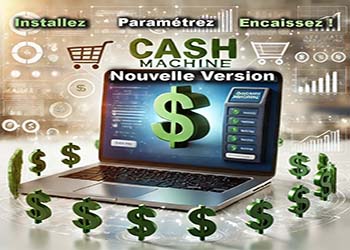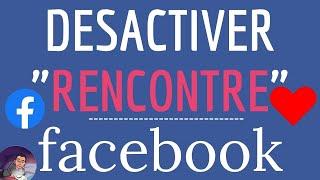Please be sure to subscribe!
https://bit.ly/3czvHzb
THE COMPLETE BEGINNER’S GUIDE TO ECOMMERCE
The Internet has truly changed the modern world.
It has changed the way we interact with each other, the way we use information and even the way we do business.
Nowadays, thanks to the Internet, more and more people decide to start their own e-shop. And it's really easy to see why.
With low barriers to entry, global transactions totaling more than $1.2 trillion in 2013, and double-digit growth forecasts, the potential is truly terrifying.
In the past, if you wanted to open a store, your customer base would be limited to those within a certain radius of your store. These days, you can open your doors much wider, on a national, or even international scale.
The purpose of this e-commerce beginner's guide is to teach you all the essentials of starting and running an ecommerce business.
WHAT IS AN ECOMMERCE STORE?
Let's start with the basics, shall we?
E-commerce - short for e-commerce - is simply a way for people to buy products or services over the Internet through a website. Or, to put it simply, eCommerce is an online store.
Many major online retailers, including Amazon, ASOS, and Overstock, fall under the eCommerce banner, and many companies with an offline presence also have an eCommerce arm, such as Walmart, Ikea, and American Apparel.
If you’ve ever bought anything online, you’ll know how eCommerce works from a consumer perspective. The focus of today’s guide is to introduce eCommerce from a business perspective.
WHO CAN OPEN AN ECOMMERCE STORE?
In a word: anyone.
GETTING STARTED WITH ECOMMERCE
At its core, eCommerce is a commercial business.
The business principles needed for running an offline business still apply to running an online business, although the challenges you will face will be different.
With that in mind, the basic outline of an e-commerce business model is very similar: you need products to sell, a place to sell them, and a marketing strategy to attract customers. In eCommerce stores, you will also need a strategy for the actual delivery of the goods you sell, since the customer cannot remove them from the shelf.
Let's take a look at each of these concepts and compare how they differ from your approach to offline commerce.
A PRODUCT TO SELL
First, your eCommerce store will need the product/s you will be selling. It can be done indoors or outdoors.
CONTENT MANAGEMENT SYSTEM
If you are new to web development, building a website from scratch can seem like a daunting task.
The good news is that you don't need programming knowledge to create a website: you can use a so-called Content Management System (CMS).
It basically provides a framework for your website and allows you to add and edit pages on your website with the click of a button – perfect if you want to add and organize a range of products.
There are a number of CMSs available, but this can get overwhelming for beginners. For simplicity, I’ll stick to comparing two of the most commonly used CMSs, WordPress and Shopify.
https://bit.ly/3czvHzb
THE COMPLETE BEGINNER’S GUIDE TO ECOMMERCE
The Internet has truly changed the modern world.
It has changed the way we interact with each other, the way we use information and even the way we do business.
Nowadays, thanks to the Internet, more and more people decide to start their own e-shop. And it's really easy to see why.
With low barriers to entry, global transactions totaling more than $1.2 trillion in 2013, and double-digit growth forecasts, the potential is truly terrifying.
In the past, if you wanted to open a store, your customer base would be limited to those within a certain radius of your store. These days, you can open your doors much wider, on a national, or even international scale.
The purpose of this e-commerce beginner's guide is to teach you all the essentials of starting and running an ecommerce business.
WHAT IS AN ECOMMERCE STORE?
Let's start with the basics, shall we?
E-commerce - short for e-commerce - is simply a way for people to buy products or services over the Internet through a website. Or, to put it simply, eCommerce is an online store.
Many major online retailers, including Amazon, ASOS, and Overstock, fall under the eCommerce banner, and many companies with an offline presence also have an eCommerce arm, such as Walmart, Ikea, and American Apparel.
If you’ve ever bought anything online, you’ll know how eCommerce works from a consumer perspective. The focus of today’s guide is to introduce eCommerce from a business perspective.
WHO CAN OPEN AN ECOMMERCE STORE?
In a word: anyone.
GETTING STARTED WITH ECOMMERCE
At its core, eCommerce is a commercial business.
The business principles needed for running an offline business still apply to running an online business, although the challenges you will face will be different.
With that in mind, the basic outline of an e-commerce business model is very similar: you need products to sell, a place to sell them, and a marketing strategy to attract customers. In eCommerce stores, you will also need a strategy for the actual delivery of the goods you sell, since the customer cannot remove them from the shelf.
Let's take a look at each of these concepts and compare how they differ from your approach to offline commerce.
A PRODUCT TO SELL
First, your eCommerce store will need the product/s you will be selling. It can be done indoors or outdoors.
CONTENT MANAGEMENT SYSTEM
If you are new to web development, building a website from scratch can seem like a daunting task.
The good news is that you don't need programming knowledge to create a website: you can use a so-called Content Management System (CMS).
It basically provides a framework for your website and allows you to add and edit pages on your website with the click of a button – perfect if you want to add and organize a range of products.
There are a number of CMSs available, but this can get overwhelming for beginners. For simplicity, I’ll stick to comparing two of the most commonly used CMSs, WordPress and Shopify.
- Catégories
- E commerce Wordpress














Commentaires